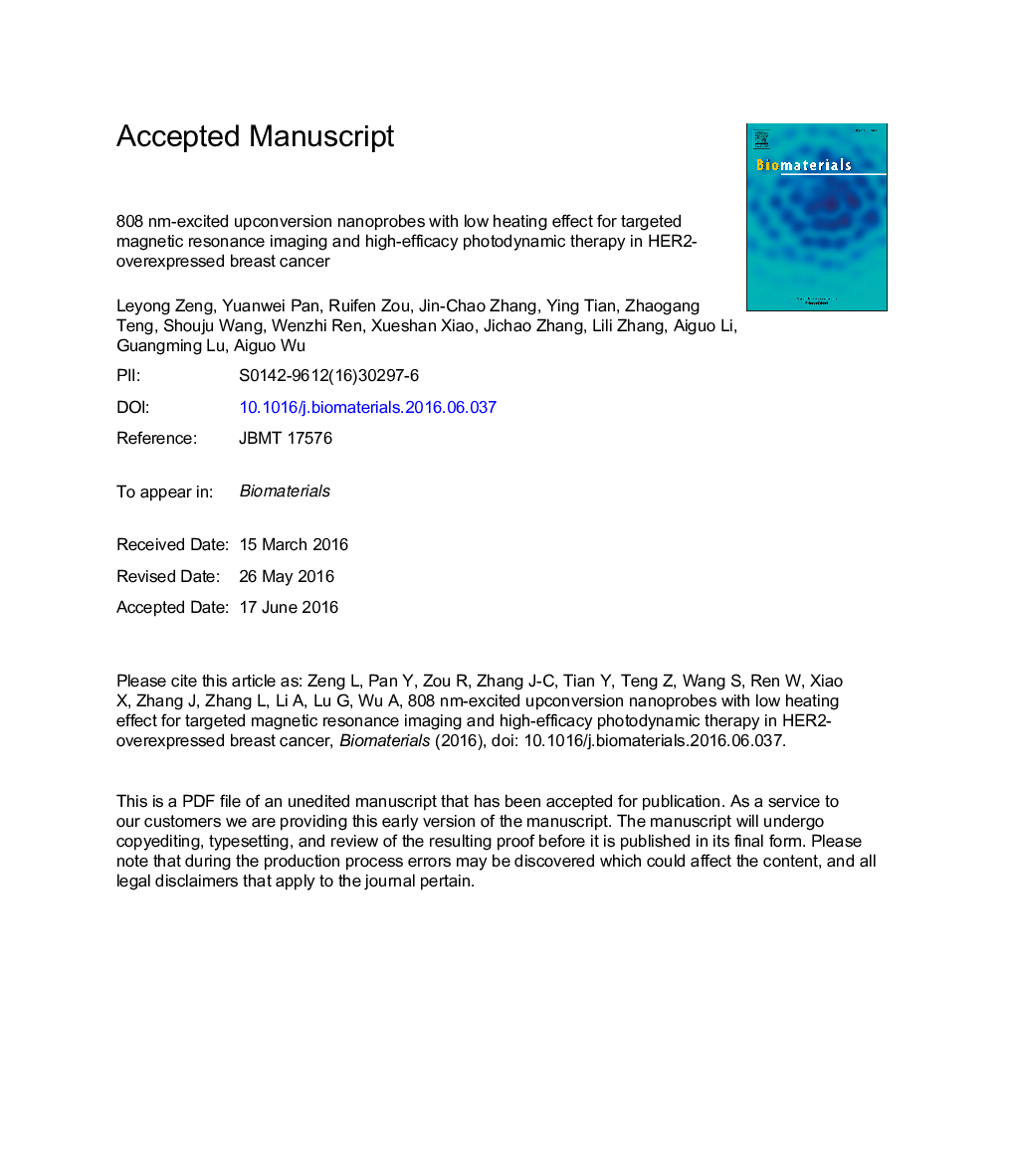| Article ID | Journal | Published Year | Pages | File Type |
|---|---|---|---|---|
| 6484886 | Biomaterials | 2016 | 39 Pages |
Abstract
To avoid the overheating effect of excitation light and improve the efficacy of photodynamic therapy (PDT) of upconversion nanoplatform, a novel nanoprobe based on 808 nm-excited upconversion nanocomposites (T-UCNPs@Ce6@mSiO2) with low heating effect and deep penetration has been successfully constructed for targeted upconversion luminescence, magnetic resonance imaging (MRI) and high-efficacy PDT in HER2-overexpressed breast cancer. In this nanocomposite, photosensitizers (Ce6) were covalently conjugated inside of mesoporous silica to enhance the PDT efficacy by shortening the distance of fluorescence resonance energy transfer and to decrease the cytotoxicity by preventing the undesired leakage of Ce6. Compared with UCNPs@mSiO2@Ce6, UCNPs@Ce6@mSiO2 greatly promoted the singlet oxygen generation and amplified the PDT efficacy under the excitation of 808 nm laser. Importantly, the designed nanoprobe can greatly improve the uptake of HER2-positive cells and tumors by modifying the site-specific peptide, and the in vivo experiments showed excellent MRI and PDT via intravenous injection by modeling MDA-MB-435 tumor-bearing nude mice. Our strategy may provide an effective solution for overcoming the heating effect and improving the PDT efficacy of upconversion nanoprobes, and has potential application in visualized theranostics of HER2-overexpressed breast cancer.
Related Topics
Physical Sciences and Engineering
Chemical Engineering
Bioengineering
Authors
Leyong Zeng, Yuanwei Pan, Ruifen Zou, Jinchao Zhang, Ying Tian, Zhaogang Teng, Shouju Wang, Wenzhi Ren, Xueshan Xiao, Jichao Zhang, Lili Zhang, Aiguo Li, Guangming Lu, Aiguo Wu,
